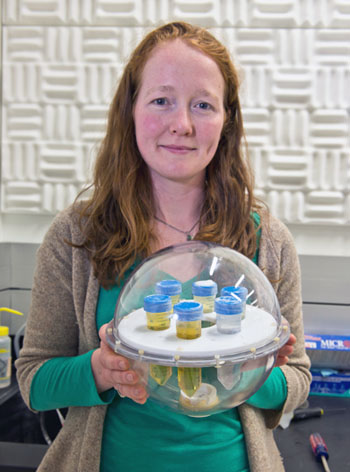Standard Phantom Developed for Breast Cancer MRIs
By MedImaging International staff writers
Posted on 03 Apr 2016
The US National Institute of Standards and Technology (NIST; Gaithersburg, MD, USA) has developed a standardized phantom to help test the performance of magnetic resonance imaging (MRI) devices used to identify and monitor breast cancer.Posted on 03 Apr 2016
The NIST phantom will help standardize and ensure quality control of breast tissue MRIs when comparing images within and between medical research studies, comparing MRI scanner performance, and the training of operators. The phantom is composed of a flexible, soft 15 cm × 12.5 cm silicone shell, with internal components made of rigid polycarbonate to ensure regular geometry. The phantom also supports quantitative MRI, which is increasingly being used for breast cancer diagnosis, staging, and treatment monitoring.

Image: NIST engineer Katy Keenan holds the new phantom (Photo courtesy of NIST).
The phantom has two basic types of internal arrangements, which can be paired for MRI scans. One unit, designed for conventional MRI scans, is based on the magnetic properties of hydrogen atoms. It contains four layers of small plastic spheres filled with solutions that mimic tissue, including corn syrup in water to represent fibroglandular tissue, and grapeseed oil to represent fat; the spheres can be customized to meet special clinical needs. Potential options include solutions that would mimic either benign cysts or calcium microcalcifications, which can signal cancer.
The second phantom unit is designed for the newer technique of diffusion MRI, which measures the motion of water molecules within breast tissue. The second unit contains plastic vials filled with varying concentrations of a polyvinylpyrrolidone (PVP), a nontoxic polymer which is tuned to mimic the differing diffusion properties of malignant and benign tumors. Both units have a modular design to help fit them into different MRI systems. The development process of the new phantom was published on March 6, 2016, in JMRI.
“The biggest design challenge was to create a lifelike mimic of both fat and fibroglandular tissue. The design success led to industry’s rapid commercialization of the phantom, currently used by five research groups,” said lead author and NIST project leader Katy Keenan, PhD. “I believe the NIST phantom can have a big impact, especially because we are seeing more use of quantitative MRI for breast cancer. It will be used by both researchers developing new techniques and by radiologists using techniques in the clinic.”
Related Links:
US National Institute of Standards and Technology














